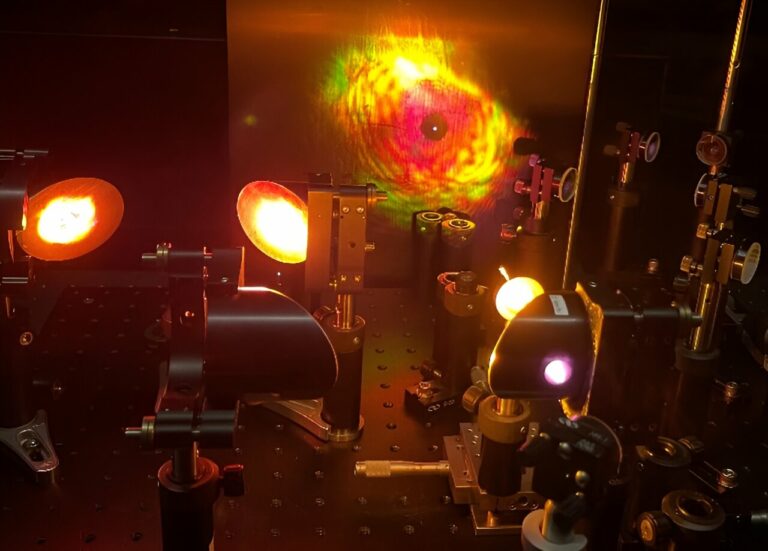Directly Investigating THz Radiation at Its Source
The pursuit of effective terahertz (THz) sources stands as a prominent scientific objective in the 21st century. The THz segment of the electromagnetic spectrum, situated between infrared and microwave frequencies, represents one of the least explored realms of light. Currently, there is a scarcity of robust and efficient sources and detectors catering to the THz frequency range.
Recent endeavors to generate THz sources involve the utilization of expansive laser facilities employing ultra-short pulsed lasers. These lasers have the capacity to deliver power equivalent to that consumed by a trillion 1 W light bulbs in a time frame as brief as a quadrillionth of a second. The laser focus’s intensity is robust enough to extract electrons from materials, transforming matter into plasma and giving rise to light across the entire electromagnetic spectrum.

Regrettably, the current laser technology employed for generating stronger terahertz (THz) frequencies allows only a limited number of “shots” within several minutes or hours. Consequently, for accurate measurement and characterization of THz sources, it becomes imperative to develop a detection method capable of fully characterizing the radiation produced in a single shot. A team of researchers led by Prof. X.-C. Zhang at The Institute of Optics, University of Rochester in New York, U.S., has expanded on a technique to detect THz electric fields, known as “THz field-induced second harmonic” (TFISH) generation, which involves converting THz fields into visible light.
This method, based on nonlinear optics (the study of the interaction between matter and intense light), doubles the frequency of an optical beam in the presence of a THz wave. Although this measurement method has been in use for nearly two decades, the researchers have devised a novel approach to directly measure the radiation at the plasma source during its production.
Published on December 13, 2023, in Frontiers of Optoelectronics under the title “Local measurement of terahertz field-induced second harmonic generation in plasma filaments,” the research capitalizes on the efficiency of nonlinear conversion from THz to visible light as the THz wave is confined to the plasma upon initiation, making it exceptionally efficient and even visible to the naked eye. In their experimental setup, the researchers induce plasma in dry air using an intense beam and employ a second weak laser beam of optical radiation to probe the plasma at a noncollinear angle.
By synchronizing the arrival of the probing beam with the creation of the plasma, the researchers can characterize the plasma’s dynamics, offering a comprehensive measurement suite for the THz source. Furthermore, by utilizing a grating to adjust the timing across the probing beam, the researchers have demonstrated the first-ever measurement of a TFISH signal within a single laser shot. This innovative method represents the broadest bandwidth achieved for THz single-shot detection to date.
This article is republished from PhysORG under a Creative Commons license. Read the original article.
Do not forget to share your opinion with us to provide you with the best posts !




0 Comments